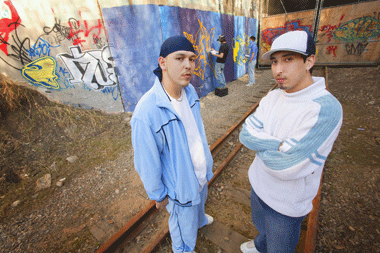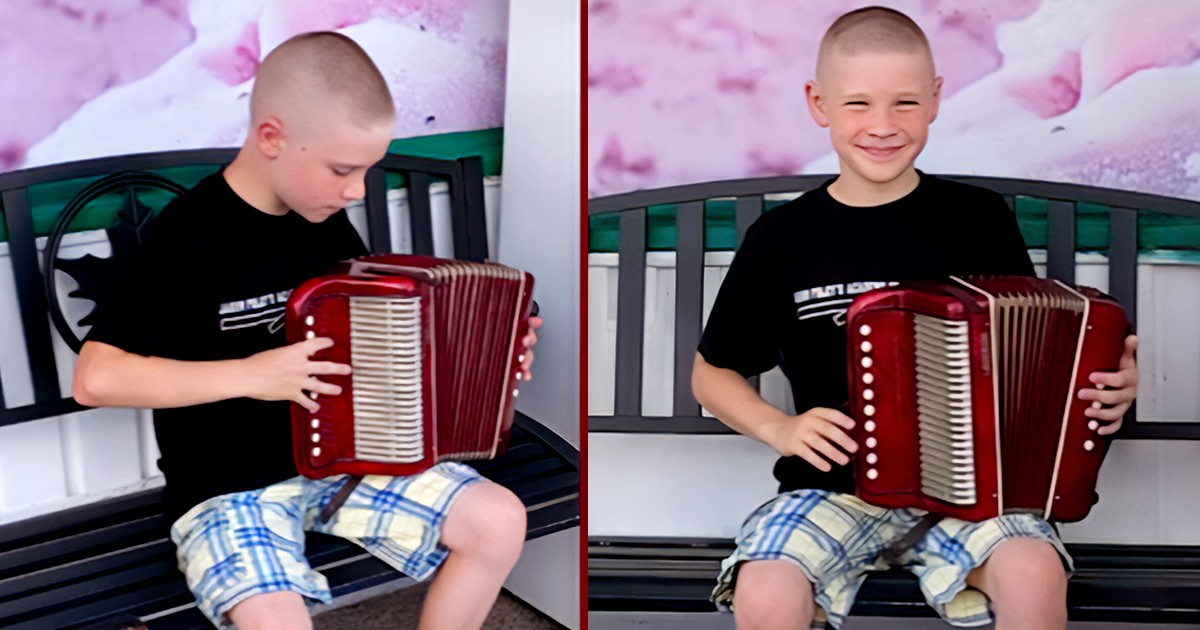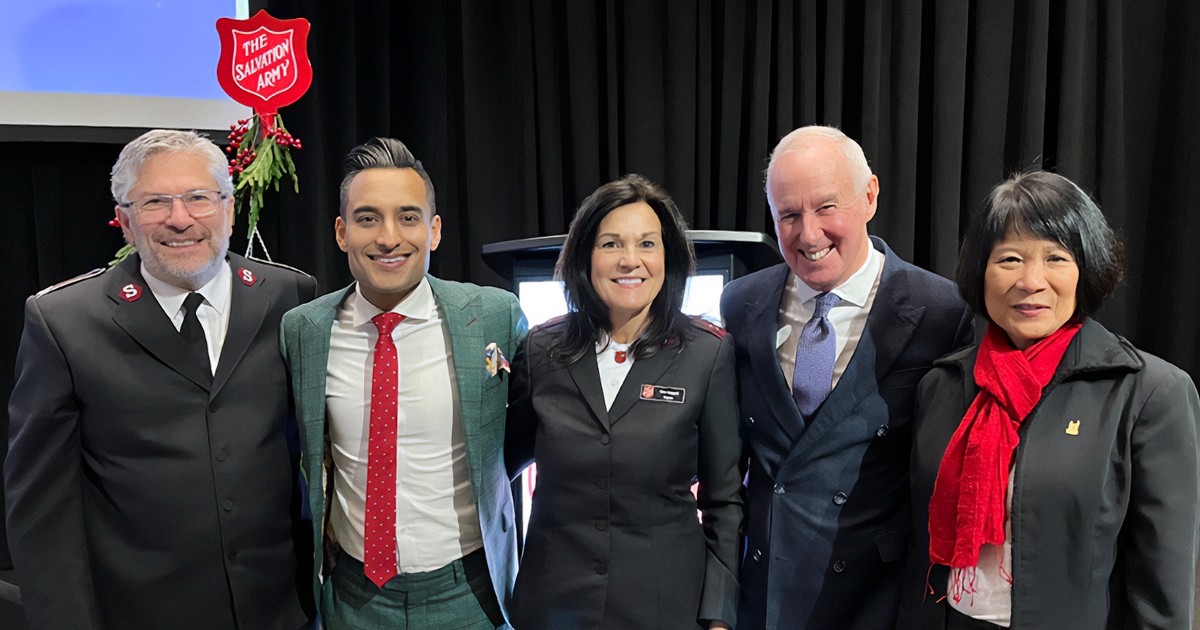 I used to work for a Salvation Army street ministry, offering sandwiches, soup and hot chocolate to the homeless on the streets of inner-city Edmonton. I got to know the people well, but no matter how often I walked the streets, interacting with so many of God's broken and lost children, inevitably, night after night, the same song would echo in my mind. It's a Sesame Street song: “These are the people in your neighbourhood. In your neighbourhood. In your neigh-bour-hood. They're the people that you meet, when you're walking down the street. They're the people that you meet each day!”
I used to work for a Salvation Army street ministry, offering sandwiches, soup and hot chocolate to the homeless on the streets of inner-city Edmonton. I got to know the people well, but no matter how often I walked the streets, interacting with so many of God's broken and lost children, inevitably, night after night, the same song would echo in my mind. It's a Sesame Street song: “These are the people in your neighbourhood. In your neighbourhood. In your neigh-bour-hood. They're the people that you meet, when you're walking down the street. They're the people that you meet each day!”
But Sesame Street it was not. Instead of mail carriers, grocers or nurses, each night I met transgendered prostitutes, aging alcoholics and homeless youth. These were the people in the neighbourhood … in the inner city.
When I was asked to write about the inner city, one of 10 Canadian people groups under-reached by the Gospel, I found it difficult to identify inner-city residents as a people group unto themselves. Are we talking about prostitutes and drug dealers? Or families on welfare―single parents and children who are living below the poverty line? Or ever-increasing immigrant groups populating urban settings? Or aboriginals who comprise a large percentage of our urban communities?
“Inner city” is a loaded term. But if I am fundraising, speaking to suburban churches about our work, or trying to explain my church's context to a visitor, I will often use the term. It makes the explanation easier because of all the inherit baggage that comes with the designation. “Inner city,” much like the term “ghetto” or “the projects,” contains all a person needs to know. When I say “inner city” the implication is that I am speaking about the kind of neighbourhood “good people” drive past on their way to “good places.” It is an area to be avoided, perhaps pitied, but certainly not a place where respectable people would choose to live.
According to the stigma, the inner city is where schools receive extra funding, where single mothers live on welfare, where gangs congregate and where homeless people live on the streets or in shelters. In Vancouver we would probably think of Main and Hastings; in Winnipeg, Main Street; in Edmonton, 97th Street; in Toronto, take your pick of Jane and Finch, Parkdale, St. James Town or Regent Park. However, all of these Canadian inner-city communities are vastly different. To use the blanket term “inner city” is insufficient, and to try to formulate a strategy to better reach such disparate neighbourhoods with the Gospel may be futile.
Regent Park, my community, is in the midst of the most multicultural part of Toronto. But for the sake of illustration, let's look at just two distinct population groups.
According to the stigma, the inner city is where gangs congregate and where homeless people live on the streets
A significant segment of the Regent Park's population is comprised of people who have arrived relatively recently from Mainland China. By in large, these neighbours are here in order to provide their families with a better life. Their daily struggles include government bureaucracy, discrimination and racism and finding a decent job to support their family (for instance, there is a member of our church who was a qualified cancer specialists in China but for years could not get a job at 7-Eleven in Canada). This population is characterized by their hard work and their self-motivation.
Contrast this with another group of residents from the same community, those who suffer from generational poverty (i.e. who have been in poverty for at least two generations). They are often defined by their sense of entitlement and their families are usually highly matriarchal. In Regent Park, over 50 percent of families are led by single parents, the vast majority of these single mothers. Perhaps victims of generational poverty would be more like the “typical” population that comes to mind when we think of inner-city neighbourhoods.
These two large subcultures, living side by side create a problem for those who wish to evangelize. How do you reach two groups that are so different from one another? One group is recognized by its self-motivation and goal-setting. Another is stigmatized as having little self-motivation, but instead feelings of entitlement. Language is a barrier for one group, but not for the other. One group receives service agencies with open arms and appreciates support, while the other is often more independent and uncertain of help. These are only a few of the differences.
What is the strategy for the Church? How do we impact communities that are so diverse? Certainly mono-cultural models (such as seeker-sensitive strategies) will not suffice, particularly when we consider the incredible variety of people who call the inner city home. Some may include native and aboriginal cultures, elderly shut-ins, prostitutes, pimps and drug dealers, alcoholics and addicts, immigrant populations, teenagers, children living under the poverty line, gang members and the homeless. Are we to write church planting and evangelism manuals for each distinct group and set up organizations to minister to each subculture individually?
I believe there is another way, a way that is far simpler and far more costly. It's a plan that has existed since the beginning of time: “The Word became flesh and lived among us” (John 1:14). In order to reach the incredibly diverse populations of our urban settings, the key is incarnation. Jesus divested himself of his heavenly glory, humbled himself and became human, choosing to live among people. And not just any people―he befriended and lived with those that “respectable people” would have nothing to do with.
Recently I was at a gathering of leaders from local neighbourhood agencies, discussing ways to help the community. Sometimes church groups are not highly respected at these meetings and this was one of those times. One man did not appreciate the way that Christians had treated Toronto's homosexual community. He stated emphatically that if Jesus were walking the streets today, he would not be afraid to walk down Church and Wellesley (the heart of Toronto's gay district). I responded with an equally emphatic “No!” I told him that Jesus would not be found walking down Church and Wellesley, he would be living in an apartment right on the corner! This is what it means to “incarnate;” to live where others will not, and to prophetically identify with those that others choose to condemn, dismiss or ignore.
Many people drive quickly past my neighbourhood because they know it by its reputation. This same reputation attracts many well-meaning evangelicals who come in for a few hours and preach on the corner, or do a kids campaign or a concert in the park. After the day is done and they pack up and return to their homes in the suburbs, they are forgotten by the community. To be blunt, those who parachute into inner-city neighbourhoods in order to “do” evangelism for a few hours are irrelevant to the life of the community, ineffective in creating any lasting change. We must stop visiting the inner city, and begin to move in, set up life, build community and love our neighbours.
<!-- /* Style Definitions */ p.MsoNormal, li.MsoNormal, div.MsoNormal {mso-style-parent:""; margin:0in; margin-bottom:.0001pt; mso-pagination:widow-orphan; font-size:12.0pt; font-family:"Times New Roman"; mso-fareast-font-family:"Times New Roman";} @page Section1 {size:8.5in 11.0in; margin:1.0in 1.25in 1.0in 1.25in; mso-header-margin:.5in; mso-footer-margin:.5in; mso-paper-source:0;} div.Section1 {page:Section1;} -->
My dream is that, when people picture the inner city, they will also think: “Oh, that is where all the Christians live”
My dream is not that people will stop picturing the inner city as a variety of broken and poverty-stricken people. My dream is that, when people picture the inner city, they will also think: “Oh, that is where all the Christians live.” If suddenly the Christians across our land sold their homes and moved into poor urban communities, not only would the communities be transformed, but the world would be impacted by the prophetic message of mercy, compassion, self-sacrifice and love; it would be a powerful example of loving our neighbours as ourselves.
At recent community meeting, politicians and community groups proposed the rebuilding of Regent Park. Our neighbourhood (government, rent-geared-to-income housing) will be torn down and a new community of mixed housing (both public and private) will take its place. This is a good and necessary plan for this particular community. At one point in the meeting, however, while rightly trying to protect the need for social agencies and social support in the new community, the facilitator sarcastically said: “There is a romantic notion going around that [community members on government assistance] will meet a middle class lady at the sandbox who says: 'Don't go to the food bank; come to my back door.' ” While her comment was met with knowing grins and snickers, my heart was screaming: “Yes! That's it! That's the plan!” It started in Genesis, and it continued when Jesus said: “Love your neighbour as yourself.” It culminated in the Cross, and it is alive today in his bride, the Church! And it seems so simple.
Henri Nouwen wrote: “More and more, the desire grows in me simply to walk around, greet people, enter their homes, sit on their doorsteps, play ball, throw water and be known as someone who wants to live with them. It is a privilege to have the time to practice this simple ministry of presence. Still, it is not as simple as it seems. My own desire to be useful, to do something significant, or to be part of some impressive project is so strong that soon my time is taken up by meetings, conferences, study groups, and workshops that prevent me from walking the streets. It is difficult not to have plans, not to organize people around an urgent cause, and not to feel that you are working directly for social progress. But I wonder more and more if the first thing shouldn't be to know people by name, to eat and drink with them, to listen to their stories and tell your own, and to let them know with words, handshakes, and hugs that you do not simply like them, but truly love them.”
However easy it may be to stigmatize residents of the inner city, it is almost impossible to define them. They are too diverse. They are all ages, colours, languages and cultures. They represent a staggering variety of hopes and fears, dreams and discouragement. By sitting on their doorsteps, by playing in the park with our kids, by entering into community we will be blessed as we interact with the bounty of God's creativity, hand in hand with the world's need. Frederick Buechner said: “The place God calls you is where your deep gladness and the world's deep hunger meet.” I can testify that such a place exists in our inner cities.









Well said and urgent message! What you describe is exactly what William and Catherine did. I am new to learn the history of Salvation Army and am reading the sermons Catherine Booth assembled into a book: “AGGRESSIVE CHRISTIANITY”. My life will NEVER BE THE SAME since finding the Salvation Army’s Founder’s words. I intend to explore my local Corp here In Arkansas, USA and see for myself if The Salvation Army they began is still adhering to the RADICAL ways they evangelized. If not, I will find those who do and join them on the streets. Time is short. People are dropping dead in the inner cities!